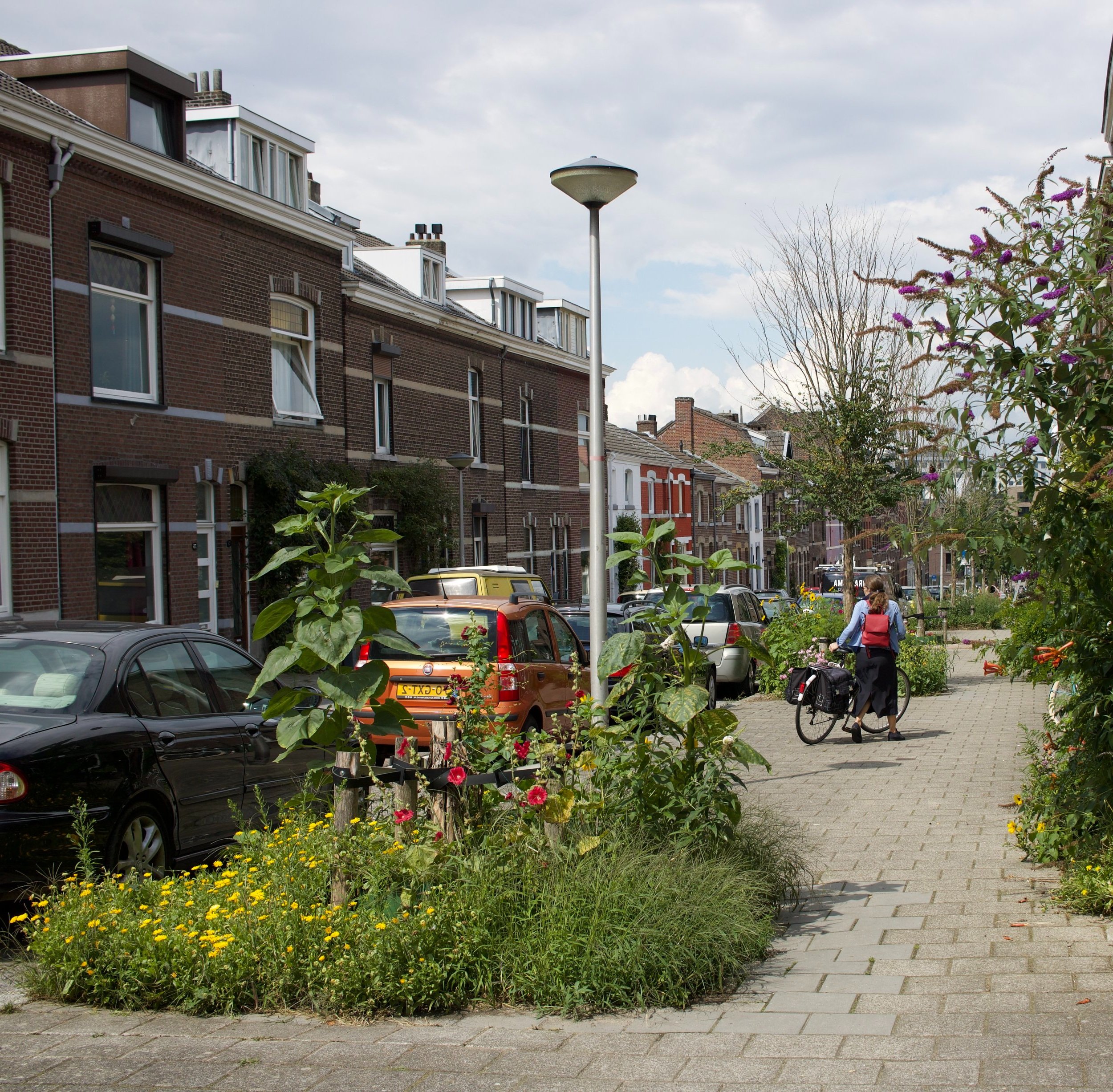Sustainable Cities are Feminist Cities
Photo by: Nicole Roach, Maastricht, 2021
If you clicked on this blog post, you probably already know that climate change is happening (like, for real, no scientific debate) and that we all really, really need to do something about it. While there are many contributors to climate change, like fossil fuels and deforestation, cities are a major one.
According to the Intergovernmental Panel on Climate Change (IPCC), urban areas account for between 71-76% of the world’s total CO2 emissions. This is largely attributed to energy use, gas-powered cars, and industrial activities. While cities pose significant environmental challenges, they also hold great promise to rapidly curbing emissions around the globe.
Feminist interventions in cities can help in achieving the rapid emissions reductions needed, such as affordable housing, sustainable transportation, and green infrastructure.
Here are just a few examples of how the feminist city is also sustainable.
Affordable Housing
The housing sector in Canada is currently in crisis, with limited housing stock, shocking price increases, and highly competitive markets in cities across the country. Housing availability is shaped by a number of factors, such as zoning by-laws, parking minimums, developers, markets, and government policies. Much of the housing in Canada is single-family detached homes (over 50% of Canadians live in single-detached houses), which are characterized by a single dwelling unit and do not share walls with other houses (think suburbs).
Unfortunately, due to the housing crisis, many Canadians are priced out of renting or owning a home, especially women and young people. In Canada, women earn about 80% of men’s full-time, full year wages, which makes affordable, dense housing options essential for women. This is especially crucial for women living in shelters, women fleeing abusive partners, or women experiencing other challenging circumstances where they may face discrimination in accessing secure housing. Affordable options for women may look like “granny” or basement suites, townhouses, duplexes, apartments, or condominiums with a combination of subsidized and market-rate housing.
These housing options can offer a solution to the housing crisis and ensure shelter is provided for all in a more sustainable way. These housing types use energy more efficiently, with apartment-style housing typically being smaller and having shared walls between units, which results in less heat loss and more heat sharing. City services are another consideration, with things like plumbing, wastewater treatment, and waste collection being done much more efficiently (less environmental impact) when more people live closer together. Additionally, higher-density housing uses urban land more efficiently, making space available for more public green space, less private backyards, and increased green-oriented urban development. These housing types must also be paired with dramatic retrofits to increase energy efficiency and enable rapid decarbonization, all while combating “renovictions” and gentrification.
Providing all Canadians with affordable housing that is safe, accessible, and sustainable, is key to addressing the housing crisis and lifting thousands out of poverty. It will also reduce housing-related emissions and use urban land more efficiently. A number of policies can help, such as up-zoning, in-filling, retrofitting, eliminating parking minimums, fighting urban boundary expansions, and adopting a YIMBY (Yes in my Backyard) attitude across the country.
Sustainable Transportation
Sustainable transportation refers to modes of travel that are less reliant on fossil fuels than a single-occupant internal combustion engine (ICE) vehicle. This can include low impact, active modes, such as walking, skateboarding, cycling, rollerblading, or using a wheelchair. This can also refer to moderate impact modes, such as taking public transportation, carpooling with multiple people, or driving an electric vehicle.
Women most often opt for sustainable modes of transportation, such as walking or taking public transit. This is largely attributed to the high-costs of owning and maintaining a personal ICE vehicle and the demonstrated gender wage gap in Canada.
These modes of transportation are undoubtedly better for people and the planet than personal ICE vehicles, with even larger discrepancies when compared to sport utility vehicles (SUVs) and trucks. In fact, a report by the International Energy Agency (IEA) found that Canadians purchase and drive the world’s largest and most polluting vehicles. The average Canadian’s vehicle burns approximately 21 tonnes of gasoline over its lifetime, resulting in the release of 66 tonnes of carbon dioxide into our atmosphere. Personal ICE vehicles also pose risks to the environment by destroying ecosystems, harming wildlife, creating noise and air pollution, resource extraction, and many more issues.
Designing cities in ways that makes it easier, safer, and more desirable for everyone to choose sustainable modes of transport is key to addressing gender inequalities and reducing urban emissions. This can be achieved by supportive policies surrounding increased frequency and connectivity of transit service, building comfortable cycling networks, providing e-bike subsidies, offering wide and well-maintained sidewalks, and much more.
Green Infrastructure
Green infrastructure (GI), is defined as “the natural vegetative systems and green technologies that collectively provide society with a multitude of economic, environmental, health, and social benefits”. GI can include urban forests and woodlots, bioswales, engineered wetlands, and stormwater ponds, green roofs and green walls, parks, gardens, grassed areas, natural heritage systems (interconnected meadows, wetlands, ravines, waterways and riparian zones), and urban agriculture.
GI has demonstrable benefits for everyone, but it is especially important for women, as there are linkages between the subjugation of women and humanity’s (i.e., colonizers/settlers) domination over nature. This is demonstrated by nature commonly being referred to as “mother nature”, women are often compared to animals, and both are seen as “wild”, needing to be controlled. This connection is especially evident with Indigenous women, who are spiritually linked to mother earth and continue to experience violence and genocide in connection with resource extraction projects.
The domination of nature, at the hand of colonizers, has had devastating social and environmental impacts. For example, the expansion of cities replaced vital ecosystems with concrete, which was one of the two largest sources of industrial sector emissions globally in 2019 (26%). The expansive use of concrete in cities also makes it hotter, with paved areas being found to boost temperature in cities by as much as 5°C. Additionally, European settlers drained Sumas lake between Abbotsford and Chilliwack, to create more farmland. Efforts to control nature have been futile, with these areas facing catastrophic flooding, displacing thousands, which also disproportionately impacts women.
Implementing GI in cities, by reclaiming green space (i.e., depave paradise) and working with nature, will help reduce emissions, provide cooling effects, flood water absorption, food for pollinators/people, reduce soil erosion, and many other benefits. This should especially be done in consultation with Indigenous peoples, providing land reparations and land returns wherever possible.
Feminist Interventions
Cities in Canada may be huge polluters today, but they shouldn’t, and cannot, remain as such in the future.
Feminist interventions surrounding housing, transportation, and green infrastructure provide great promise for dramatic emissions reductions, all while addressing inequalities and making cities more livable for everyone.
Let’s make cities better today, for a stable climate tomorrow (fingers crossed).


